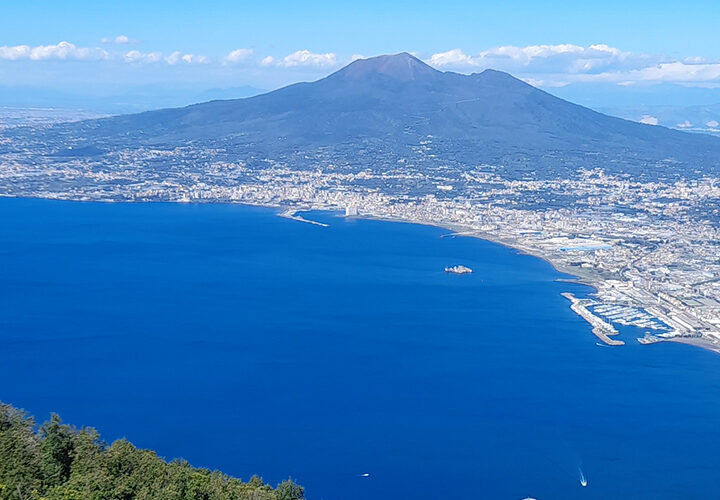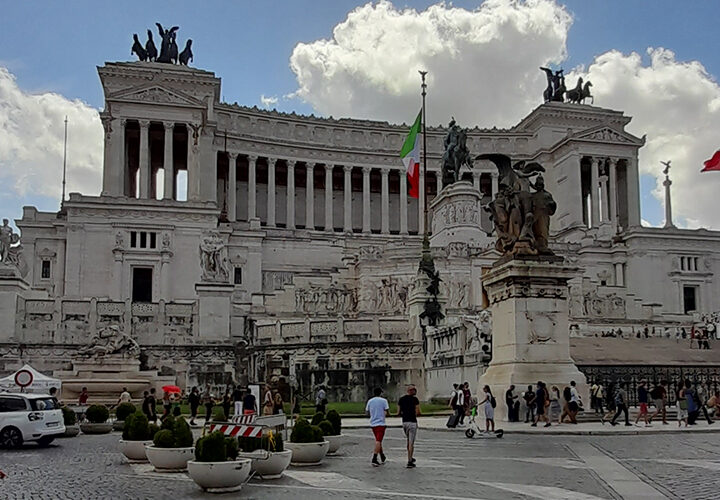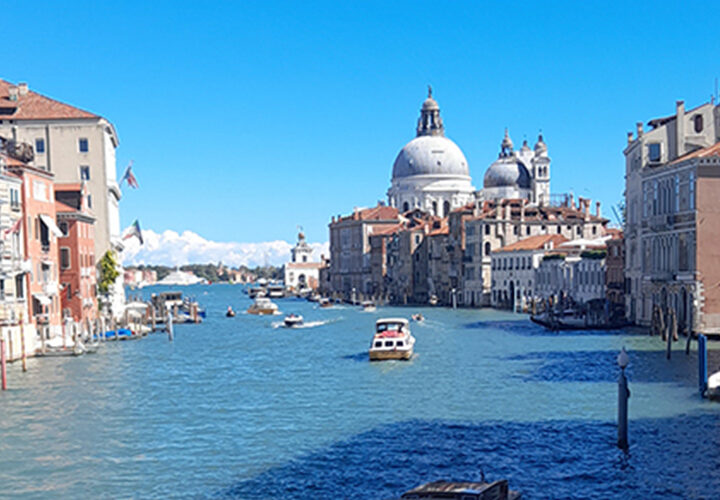Exploring the world: comparing different types of travel.
When it comes to travel, the possibilities are endless. With 197 countries and over 10,000 cities in the world, there are a whole host of places to try, and experiences to be had. But as well as the destination, the type of holiday can really affect the experience you have. Most people are accustomed to weekend breaks, or short stay holidays of about a week. These usually consist of staying in the same location, often a city, for a few days (usually over the weekend), and exploring this area and sometimes attractions around it. This tends to be how the majority of people enjoy their holidays, as it gives them a chance to unwind for a weekend in a city they’ve always wanted to experience, or go off the grid for a bit by the sea or in the mountains for a few days. However, if you can find the time, there are also lots of other types of travel, each with their own benefits.
In this blog I will look at the differences between weekend breaks, one-month interrailing adventures and gap year backpacking adventures. These are rough categories, mostly designed to differentiate the time spent away, distance typically travelled and scope of the holiday. I will compare the advantages and considerations of each mode of holiday, as well explore the possibilities that each type offers. This can then help you decide whether you want to try longer holidays to further away places, or if regular escapes to cities and secluded retreats are more your thing.
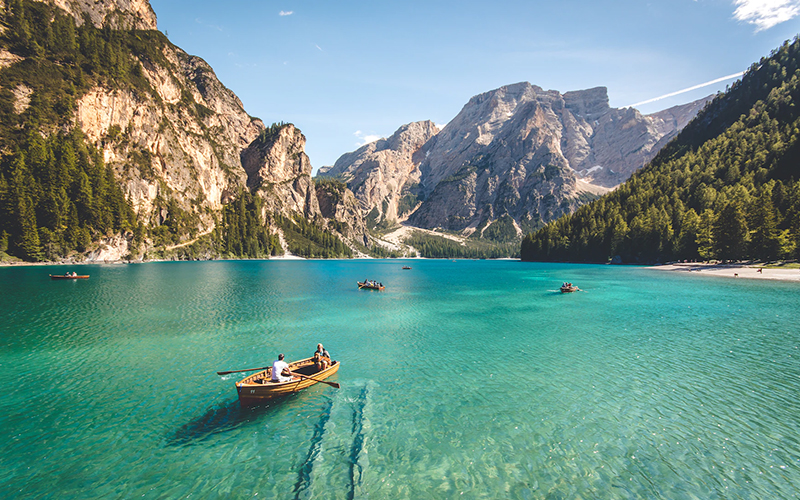
Why Travel?
This fundamental question lies at the heart of any decision being made about the type of holiday you want to embark on. Why have you decided to go, and what do you hope to gain from it? Are you wanting a break from work, or to explore another culture for a few days to get away from it all? Are you wanting to see as much of the world as you can, and explore as many beautiful places as you have time for? Or are you wanting to completely immerse yourself in a different culture, try a different way of life, and come out of it with a new appreciation for the world? These are all valid reasons for travelling, but all have different types of holidays associated with them. Once you’ve decided why it is you want to travel, it’s easier to decide which of these holiday types you want to try.

The quick getaway: a classic weekend break.
Probably the most popular type of holiday with people, the ‘weekend break’ here refers to a shorter style of holiday of anywhere between 1 and 4 nights, typically a weekend. According to the Office for National Statistics, the average time spent on holiday for Brits is only 8 nights, and similarly over 50% of holidays taken by US residents are just day trips and don’t require staying overnights, and even their average longer ‘summer’ holidays are only an average of 3 nights away. Understandably, weekend breaks are popular as they’re easy, and can be enjoyed at any time. Here is a full list of the potential benefits of a weekend break style holiday:
- Due to their short nature, weekend breaks can be had just about any time of year, often without taking any time off work. Assuming you work a 9 to 5 shift Monday to Friday, you could book a flight on Friday evening or Saturday morning, spend the weekend away somewhere relaxing, and be back for work on Monday. And bank holidays, or taking a shift off work on Monday and/or Friday can make this a bit longer, without meaning you’re having to use up many holidays.
- There are a few reasons weekend breaks are the cheapest type of holiday. Firstly, they’re shorter, meaning you get to have a good few days to really immerse yourself in a city or area, but without having to spend money for weeks on end. But they’re also cheaper because of when you can go- virtually any time. If you’re job or study stops you from going on long breaks apart from at peak seasons like the school holidays, this can make it very expensive, especially in busy and popular places like Venice or Amsterdam. However, if you can take a weekend break to these cities in off-peak season, it’s a lot cheaper and more fun, and you can then choose somewhere less busy and expensive for a longer holiday if you wish.
- Most people who go on backpacking holidays tend to do so in their 20s, and moving around a lot on extended holidays can become more challenging as you get older, but the humble weekend break knows no age limit. With limited travelling and short times away from home, it is considerably more accessible for young children and older adults.
- Quick getaway. It gives a great opportunity to recharge your batteries and experience a change in scenery, even with a busy schedule. This means that this doesn’t have to be a holiday that takes a lot of planning, but just be a quick break away if life is stressful.
- Focus on nearby destinations. Although one could go on a weekend break anywhere in the world, due to limited time and not wanting to waste time travelling and/or recovering from jetlag, most people choose nearby destinations for city breaks, or locations within their own country. This gives you an excellent opportunity to explore locations within your country or neighbouring countries, which may open your eyes to great destinations you wouldn’t usually consider for a holiday due to their proximity to you.
- You can have more of them! Due to weekend breaks’ short duration and cheaper costs, you can do more of them. This means that if there’s lots of cities you want to visit, but perhaps not lots you’re interested in around them for a longer stay, then this gives you the opportunity to explore these cities alone in great depth. It makes ticking locations off the map easier, as you can wiz between popular cities with relative ease at a much faster pace than you can book long stay holidays.

However, the weekend break is not a perfect format. It is especially popular with families and people with busy schedules and/or low budgets, but many experienced travellers have issues with this format a principal way of exploring the world. Here are some potential disadvantages to consider:
- Limited time. Weekend breaks offer a limited time to explore the place you’re visiting. For some places, this may not be an issue, but for others this may leave you missing out on the things you’d like to do.
- Limited scope. Weekend breaks tend to be focused around one city or one area (e.g. mountain range or beach.) This means that you won’t get a full flavour of the country you’re in, or the areas around it, only the bit you choose. However, with many cities this isn’t necessarily a problem, as they’re brimming with culture and attractions themselves. But if you want something broader then a longer holiday might give you more chance to explore.
- Value for money. Although weekend breaks are cheaper in nearly every case than the other two types of holiday examined in this blog (interrailing and backpacking) some would argue they’re the least value for money. For example, if you fancy a weekend break to Milan, but also like the look of Florence, Pisa, Rome and Naples, then it is significantly more expensive to book a flight there and a flight back for each city individually, instead of just waiting until you can do them all as a longer travelling holiday; ergo only booking two flights for four locations instead of eight flights for four locations. If you’re visiting a city that you don’t know much about, and find it a bit underwhelming, then it can often feel like you’ve wasted your money and you should just have worked it into a longer trip as a stop on the way.
- Ironically, although weekend breaks are popular to destress, they can often cause more stress. This is because you’re always on your feet (especially if it’s a city break) and you have to worry about the stress of using an airport twice in only a few days. If things like airports and public transport don’t stress you, then maybe this won’t be an issue, but for other people this can leave them spending the precious little time they have their worrying about packing up, getting to the airport and getting their flight.
- Itinerary and forward planning. With city breaks being short on time, planning what you’re going to do there is essential, especially in a city. There’s no way you’ll get to see everything you want unless you have at least some plan and a good knowledge of what’s there. For some people this just makes the holiday feels more controlled and structured, however others may not want to have to do such detailed planning, especially if they’re having this holiday because their lives are already too stressful. And in cities with lots of attractions, such as Rome or London, seeing everything will be impossible in this time frame so planning is important to prioritise what you want to see.
- Rushed experience. Even if you do plan, you’ll still need to rush between these places. Although the essence of a city break is often hopping from attraction to attraction all day then relaxing in a restaurant later, if you’re wanting a relaxing break this might not recharge you in quite the same way. Weekend breaks in more secluded places with less attractions, such as the mountains or by the sea, can be better for helping you recharge than rushing between attractions in a hot Mediterranean city.
Some ideas of popular weekend breaks:
Popular weekend breaks include London, Edinburgh, York, Dublin, Paris, Amsterdam, Rome, Milan, Barcelona, Madrid, Lisbon, Berlin and Copenhagen. These are all sizeable cities with lots of attractions from museums to historical sites to natural beauty, yet are all close by to the UK, meaning short flights and easy travel.
The weekend break, or shorter stay holidays, remain very popular, and are great for small getaways amidst busy life. But if you really want to explore the world and immerse yourself in different cultures, longer for holidays might be more fitting for you.
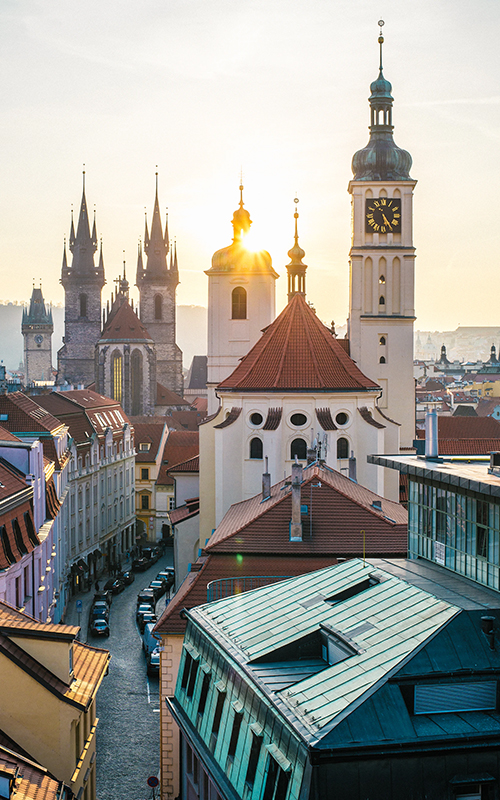
On the road: the interrailing adventure.
This type of holiday can be broadly described as a longer, more immersive break. Typically between 14 days and 3 months, and usually involves moving around a few places, if not a few countries. Interrailing refers to the Interrail Pass: a pass you can purchase that allows you to travel by train anywhere across Europe (notably not just the EU) for a single fare. I will primarily use Interrail as the example for this style of holiday, as it best encapsulates the average time and distance an on-the-road holiday incorporates, however this isn’t exclusive to Europe or the Interrail pass: a road trip across the USA stopping at various attractions for 2 months would also fall into this type of holiday despite not using the interrail pass.
Interrailing can cover as much or as little distance as you want, in the time. Some people choose to have an in-depth exploration of a certain region, for example the Alps, others might want to travel all across Europe, from Amsterdam to Istanbul. As a result, the amount of time you spend in each location can change significantly from person to person. Some only spend the equivalent of a weekend break in each city, but visit lots of cities, others might spend a week to ten days in each city, but only visit four or five. However you choose to do it, you’re certainly going to have a much more immersive experience in Europe than if you just stay a couple of nights. Here are some of the potential benefits of an interrailing adventure:

- Cultural immersion and scope. With interrailing, you get to spend longer getting to understand the cultures and histories of the places you visit. Moreover, as you can visit lots of different countries, you can immerse yourself in a wider variety of cultures. Often interrailing people may say they’re visiting, in a word; Europe- and usually we’d consider such a statement a geographical error, however this is precisely what interrailing is. You don’t just get to explore the culture of one city, or even one country, but rather a large variety of countries, giving you the opportunity to explore the vast and varied cultures of Europe, all in one trip.
- Freedom and flexibility. Interrailing gives you an immense amount of freedom and flexibility to travel where you want in Europe, as it can give you access to 33 countries at present- and this isn’t counting countries like Monaco or The Vatican that can be accessed easily through other locations (in these examples, Nice and Rome.) Furthermore, unlike planes you can change your destinations en-route, as the global pass gives you (depending on your package) unlimited access to any trains in Europe for the agreed days, meaning you can change where you’re going last minute. And as many interrailers book cheap accommodation on the night, this means you can set off on your adventure and decide the route along the way.
- Distances traveled. Unlike planning a holiday with your own car, Interrailing means you can cover much further distances, and the whole of Europe is at your fingertips. Once you’ve got your pass, Europe is your oyster, from the Fjords of Norway, to the banks of the Danube, to the azure-blue waters of the Mediterranean to the bazaars of Istanbul- a whole continent is at your fingertips, however you want to explore it.
- An unforgettable escape. Due to the longer nature of this holiday, it gives you more time to not only get immersed in another culture, but also to feel as escape from your own life. Weekend breaks offer a break, but interrailing offers an escape for a couple of months to leave your own life for a while and experience different ways of life. This is why it’s popular with students, especially after graduating. Plus it gives unforgettable memories that you can cherish forever, and an insight into countries and cultures that may prove valuable as you grow and develop as a person.
- The places in between. As interrailing is focused on rail travel as opposed to flying, it means you get to see much of Europe from a train window. Often this can be boring or even just dark (there are lots of tunnels on popular Interrail routes) but other times it can offer stunning views, and allow you to see smaller communities that either you can’t or don’t have time to visit. This in itself might persuade you to change your itinerary or perhaps think about future holidays in your travel through a region or city that you think looks worth a visit.
- Saving money. If used right, an interrail pass can save money. But more than that, this style of holiday is designed to be cost effective. It typically involves staying in hostels and B&Bs most nights, as staying in five-star hotels each night for a couple of months isn’t affordable for most travellers. So if you’re planning on using a lot of trains, the pass can be really cheap, and the general low-cost, self-sustained Interrailing format can prove very cost-effective in the long run.

However, although this style of holiday is one of the most popular with travellers who want to see as much of the world as they can, especially young travellers, it does have certain considerations you should take into account before trying this type of holiday:
- Cost: Although interrailing is arguably the most cost-effective type of travel here, that doesn’t mean you won’t get caught out by the cost. Costs can vary dramatically between countries, especially in terms of hostels and food. Places like Switzerland and Norway are known for being more expensive, whereas countries like Montenegro and Spain offer cheaper options. It’s also worth noting that not all transport is covered by interrail- for example, sleeper, high-speed or specialist trains (E.g. Eurostar) will often accept interrail but also need to reserve seats which an interrail card will not do. Therefore you’ll often need to pay more to reserve seats or to pay full price (if you’ve left it too late or they don’t accept the pass at all) so be prepared for hidden costs like this. It’s always worth budgeting first to make sure that you have enough for the definite charges on the holiday, as well as plenty of spare money for any unexpected charges. I would also recommend looking at the train prices if you just buy the tickets (in advance) for your journey. For example, when we booked a trip exploring Italy, we found it was cheaper to just book the tickets individually, instead of getting a single country interrail pass for the number of days we’d like to travel, thus giving us a mini interrailing experience without spending more on the official pass. How cost effective it is is determined entirely by how far you’re travelling and where you’re going- always budget first though.
- Being over ambitious. Interrailing, and any long road trip style holiday gives you a huge scope, but remember to use this wisely. Most people probably can’t travel for a couple of months across the whole of Europe- not only would be it too much travelling, but it would also mean you wouldn’t get to spend much time in each place, and would feel like you’re just rushing around. I would recommend choosing a region such as Scandinavia, The Mediterranean, The Balkans, or Central Europe and focusing on there, as it will still give you a very large scope but would avoid very long train rides. If you do want to move from one side of Europe to another, or just don’t like 6+ hour long train rides, it might be worth looking into flying instead of using trains. And I’d always recommend taking the right amount of time in each stop, 2 nights to a week at least, and not to rush around.
- Travel fatigue. With any long form holiday that involves lots of travelling, travel fatigue is a high possibility. This can be caused by too many lengthy train journeys, too much walking around busy city centres or the near constant changing of hostels. It’s worth getting to know your boundaries before leaving, and working within them. Focus on shorter journeys and longer stays in each place if you’re prone to fatigue, and don’t be ashamed to have an afternoon off to relax, or even an entire day just relaxing in your hostel room. If you find yourself becoming burned out midway through your trip, pace yourself and take time to rest, and don’t be afraid to cut parts of your holiday off or stay longer in each place.
- Time management. Effective time management needs to be utilised to make this trip a success. With trains to catch and decisions to be made about how long to stay in each locations, it’s always worth having a plan of how you’re going to spend your time.
- Local culture and currency. With interrail easily connecting Europe, it’s easy to forget that they’re all very different cultures. Take time to research the cultural differences between the countries you plan to visit, and any differences in law that might affect your travel. Also check the currency, not all countries are in the Euro and this will mean you’ll need to acquire some of their local currency, with popular countries like Switzerland, Sweden and Norway opting out of the Euro. Also check if the country is Schengen, as this may affect how easy it is to cross the borders. As of 2023 A British passport will get you into any European country visa-free with the exception of Russia (and Ukraine for security reasons) however certain countries may need to check your documents as you cross the border which may add to travel time by as much as 2 hours.
- Safety. With any long holiday in countries you are unfamiliar with, be aware of safety issues. Always check the emergency service number for the country you’re going into, and have this memorised or written down. Consider where you’re staying- travellers often aim for the cheapest price, but check that it is legitimate and in a safe part of town. Be careful going out at night and stick to well-lit and well populated areas. Stay with your group, or choose hostels where you can make friends that you can explore with. Keep friends and family aware and up to date with what you’re doing, especially if you’re going somewhere dangerous or doing something risky like swimming in the sea or mountain climbing. Keep an eye out for scams or people who are looking to take advantage of travellers and keep away from them and stay with your group.

Some ideas of interrailing adventures:
- Scandinavian voyage- explore the countries of Denmark, Norway, Sweden and Finland (and even Iceland if you want to catch a plane) to get immersed in Norse culture and stunning northern scenery.
- Balkan tour- for something warmer, explore the turbulent but gorgeous Balkan region of Europe. Start in the alpine peaks of Slovenia, travel down Croatia’s stunning Dalmatian Coast, explore Bosnia & Herzegovina and Serbia, before travelling back down into Montenegro and into Albania for some stunning beaches and mountains, and finish in Athens, Greece- the stunning home of western civilization.
- Eastern European tour- explore the diverse and fascinating cultures of eastern Europe in Czechia, Poland, Lithuania, Latvia and Estonia.
- Thematic tour- choose a theme you’re interested in, and explore different sites around Europe! For example, an art tour in Paris, Milan, Florence, Vienna and Berlin, or perhaps an Ancient Civilizations tour of Greece, Croatia and Italy, stopping at ancient wonders like The Colosseum, Pompeii, the Parthenon and Pula’s Amphitheatre.
- On country in depth exploration. Why not spend the extra time exploring one country in a lot more depth, such as Italy or France Turkey? With these countries being large and diverse with many attractions, there’s enough to explore in here for a couple of months or less without crossing borders if you don’t want to.
Interrailing is a great, and often affordable way, of seeing the world and exploring different cultures in a lot more detail that a short holiday like a weekend break. They offer the opportunity to explore many different cultures in more detail, and explore more of the world in one go with their easy border-crossing itineraries. And although they’re quickly becoming the holiday of choice for graduation holidays and as a means to fill up the summer months, they’re still not the classic long form holiday associated with exploring the world.
The Gap Year: exploring new cultures by living new cultures.
Although the weekend break is a great way to experience culture, and interrailing allows for a broader cultural experience and more time devoted to exploring different cultures, it’s only the classic gap year that allows travellers to full experience different parts of the world. The gap year refers to a year or two spent travelling, usually spending many months in each country, or even the whole year in one country. It’s also worth noting that for this definition travel, and experiencing the world has to be the main goal- although many people on gap years get jobs, and often go to specific countries for specific jobs (such as aid work in Africa, or farming work in Australia) this doesn’t count simply moving abroad for your job to a different country. Although this is a good way to see the world, since your job is the primary reason you’re going to the new country, will take up most of your time and may be indefinite instead of just a year, it doesn’t fit the definition of ‘travelling to explore the world’ as well as travelling to a country and getting a small job while out there. Gap years are all about becoming emersed in another country’s cultures, and here are some of the pros of this style of travel:

- Deeper cultural immersion and understanding. Gap years allow you to become immersed in a culture by not just visiting a country, but by living there. Instead of staying in a hotel, you’re becoming part of the community, and working hard just like everyone else in the community. It will allow you to see beyond the tourist perspective of a country, and understand how the culture works day-to-day. Instead of just seeing and exploring culture, you’ll be able to live it and become part of it.
- If you’re going to a country that’s not English speaking, it’s a great way of learning the language. The best way of learning a language is to immerse yourself in it and the culture associated with it, so living in a country or collection of countries for a year or two will really help you learn the language. This will come in useful if you ever want to work there, or emigrate there full-time.
- Access to less visited places. The previous two types of holiday have been Europe-centric, and although they could be enjoyed anywhere in the world, flying from the UK to somewhere like Thailand just for a weekend or week’s holiday is expensive and means long travel times with limited exploration time. Gap years solve this problem, as if you’re there for a year or two then anywhere in the world is open to you, so people often decide to pick places like Australia, Argentina or Cambodia that are too far away to travel for smaller holidays. It also gives you the chance to explore places and cultures most people haven’t even visited, never mind spent much time exploring.
- Wider range. Although gap years often don’t include the same number of counties and fast-paced interrailing, often because of work commitments, you do have significantly longer time to explore. This could involve going to more locations, especially off the beaten track locations in the country you’re staying at, or by taking time to visit nearby countries. If you have the funds to do a gap year without working and decide to focus on travel, then there’s no limit on how much exploring you can do, and you can spend longer in each location too.
- Meaningful connections. As backpacking involves immersing yourself with the local community, you will inevitably make connections and friendships that endure. This will allow you to have a wide connection of friends all across the world, either of locals of the country you were in, or fellow travellers. Either way, this will give you a better appreciation for the world and mean you’ve got lots of new friends to have future traveling adventures with.
- Finding yourself. Although it’s a cliché, a gap year or extended travel experience is a great way to engage in self-discovery. Although there’s no one way of doing this, travelling the world can present you with experiences to help with your self-growth. This could include types of work, cultural and religious experiences, and just the feeling of being free and independent somewhere far away from home.
Like any of these forms of holiday, there are some considerations to keep in mind if you’re planning on taking a gap year. These include:
- Financial implications. Backpacking can be very expensive, from paying for transport, food, accommodation, visas, travel insurance, emergency funds as well as money for trips away and attractions while you’re over there. Ensure you budget carefully before you go.
- You should prioritise your safety and wellbeing whilst on your gap year. Research the safety conditions of the countries you plan to visit and stay updated on travel advisories. Take precautions, such as securing your belongings out of sight and in a zipped bag, being aware of your surroundings, and following local laws and customs. Travel insurance is also crucial to cover any unexpected incidents or emergencies. Be sure to fully research the countries you’re visiting so you have a good idea of local laws and threats, especially if these are different from those of the UK.
- Check the health guidelines of the countries you stay in, and check for any dangerous diseases or animals that might harm you. Make note of local healthcare provisions, and research ingredients of typical dishes of that country if you have allergies. Remember you’ll need to get the vaccines that are required to enter the country, so always check these well in advance to give you chance to get them.
- Remember you’ll need to get a visa for most countries if you’re visiting for more than a few weeks. Research online how to get these and give yourself time for this to come through.
- Most backpacking is done alone, and although you’ll probably make friends along the way, being far away from home for a long period of time may cause homesickness. Remember it’s ok to feel this, just make sure not to isolate yourself too much and to keep going out and doing things, and if you can schedule regular phone calls with family and friends back home.
- Cultural sensitivity. Respect the customs, traditions, and local way of life in the countries you visit. Educate yourself about local etiquette and cultural norms to avoid unintentionally causing offense. Embrace cultural diversity and be open-minded to different perspectives and practices.
- Career and study implications. Ensure before you go on a gap year that it’s the right time for it in your career or study plans. If you’re in employment or studying many employers or institutions may have guidelines for sabbaticals and gap years, so try and stick to these and be open and honest about your plans. Keep them up to date, and make sure they know how long you plan to be away for. Gap years should improve your career journey and employability; don’t let it damage your career by taking it at the wrong time.
Ideas for backpacking gap year journeys:
- South-East Asia. Explore the fascinating and vibrant cultures, stunning landscapes and delicious cuisine of countries such as Indonesia, Thailand, Cambodia, Laos or Vietnam. These stunningly beautiful countries have cultures and ways of life vastly different from ours, so immersion in them will give you a once in a lifetime insight into this part of the world and alternative lifestyle.
- South America expedition. Explore the stunning landscapes and isolated cultures of countries like Brazil, Peru, Bolivia, Chilie and Argentina. These countries are often overlooked by travellers, due in part to their distance and often isolated cultures, but backpacking here would prove insightful and allow you to see sights and experience customs seen by very few.
- Australia- work and travel. A popular gap year destination, Australia gives you a solid base from which to work, as well as a continent-sized country to explore. Although the language is the same as our, the culture and wildlife is unique and vibrant, and spending a gap year here could allow you to see Australia’s indigenous community, who’s traditional ways of life are being preserved and who’s culture and folk tales and making a re-emergence.

The road less travelled, or more?
Ultimately, how you travel is up to you. Everyone has different reasons for travelling, and everyone wants to get different things out of their trip. From seeing beautiful sights, experiencing new cultures and perhaps even finding yourself, every one of the millions of people currently at airports or train stations or waiting for a Greyhounds have their own unique reasons for travelling, and their own destinations in mind. For some, travelling is about seeing the world; for others it’s about feeling it and being part of. Travel should be something to look forward to and something to enjoy and savour, however long it lasts for. So regardless of whether you’re looking for something quick and exciting to give you a well-earned rest, or you want to explore the world one train ticket at the time, there’s a mode of holiday for you. Although this blog has compared them, there is no answer for which is the best- they’re all about seeing different places, embracing different cultures and stepping out of your comfort zone, however long you decide to stay for. Some destinations and forms of holiday are tried and tested, others waiting for you to pack your things and go exploring- all you need to decide is where to start.
Written by Jeremy Hodgson


